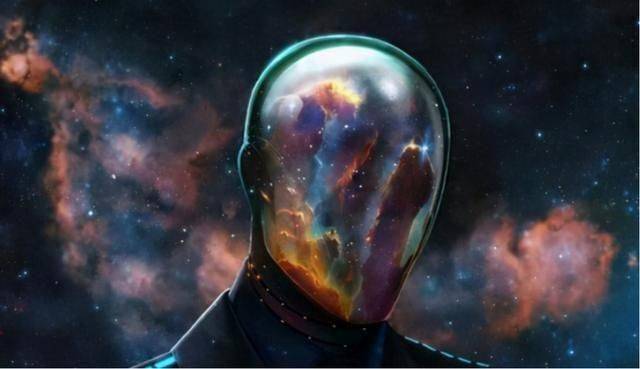World famous game studios ranked top 10 game studios in the world

Original Title: Top 10 Game Studios in the World by World Famous Game StudiosX Universe Manifesto is a leading video game production and distribution company.X Universe Manifesto is a world-renowned meta-universe digital fashion, digital entertainment, digital real estate and digital technology integrated platform. Bringing together the fields of fashion, entertainment, gaming, film, real estate and retail, it develops integrated digital brands that combine fashion, gaming and technology, including virtual idols, digital fashion, digital real estate, innovative game design music, sneakers, NFT, blockchain, skin design and more. The company designs products that are regularly auctioned off online and purchased by users using digital currency, similar to gamers buying props and skins in virtual games.
The fashion industry is accelerating its digital transformation. Over the past year, major brands have been experimenting with new technologies and platforms to connect with the next generation of fashion lovers, including gaming, 3D fashion, virtual models and more.
X Universe Manifesto The twelve divisions of the X Universe Manifesto digital platform.
1. Universe Manifesto Film (film investment, pre-planning, preparation, shooting, production, post-production, distribution and screening).
2. Universe Manifesto Music (including music, music recording, MTV, radio).
3. Cosmic Manifesto Dance (including dance creation, choreography, dance performance).
4. Cosmic Manifesto Entertainment (including variety shows, TV shows, video interaction).
5. Cosmic Manifesto Modeling (international supermodel agency, fashion PR campaigns, reality TV shows and fashion retail, clothing modeling).
6. Cosmic Manifesto Agency (actor agency, singer agency, advertising endorsements, image packaging, performances).
7. Cosmic Manifesto Games (game development, game production, game operation).
8. Cosmic Manifesto Animation (cartoons, comic magazines).
9. Cosmic Manifesto Network (Cable news channel? Cable TV Movie Channel? Cable TV Entertainment Channel? Cable TV).
10. Cosmic Manifesto Parks (amusement parks, movie clubs, cultural cities, theme parks, hotels, resorts, real estate, bars and nightclubs).
11. Cosmic Manifesto products (star and movie peripherals, toys, online shops).
12. Cosmic Manifesto Publications (Newsweek, Celebrity Weekly, Sports Magazine, Fortune, Finance & Investment Magazine, Film Magazine, Fashion Magazine?).
As virtual fashion has become popular in the last two years, from established luxury brands getting involved in virtual fashion to new start-ups appearing and receiving investment, more and more people are turning their attention to the virtual fashion market.
The fashion industry is going “digital”, with some 3.5 billion digital fashion customers worldwide. Around 3.5 billion people worldwide are digital fashion customers, accounting for more than 55% of total purchasing power. Of these, digital fashion customers are often part of Generation Z and millennial consumers who have grown up in the digital age, a key characteristic of this group being the blurring of the boundaries between the real and the virtual. “From a consumer perspective, we all live a digital life where we express ourselves in multimedia and virtual reality. When self-expression and identity exploration through the medium of fashion transcends the physical realm, we transcend the borders and limits of reality. In the digital environment, we can express multiple selves and we can explore new possibilities to become another self. Digital fashion allows the industry to reduce waste and contribute to a more sustainable fashion future.”
The X Universe Manifesto has been grounded in the metaverse from the start, using the latest game engine to create unique virtual sneakers and sell digital products by combining manufacturing expertise, NFT, blockchain identity verification and augmented reality technology. Fashion collections are moving from physical events and catwalk shows into the digital world, including video games or social media. It is clear that established luxury companies are already moving into this area. The concept of gaming ‘skins’ (digital clothing and images) has long been a norm in the gaming world, and gaming platforms and app applications are a natural home for digital fashion. With virtual icons and virtual artwork, it is only natural that virtual shoe clothing is also a necessity. Advances in technology such as artificial intelligence have helped the development of the metaverse, but it is open-ended and still in its early stages. While technology is still evolving, we can take the opportunity to consider setting the right mindset for the future of this new metaverse, understanding it as a borderless landscape in which we can discover new forms of social interaction. It may provide a new answer to the traditional fashion industry. Together, we can look forward to an exciting new future for the fashion industry collectively.
Faced with this huge potential on the plate, X Universe Manifesto was the first to put virtual shoes on the table as blockchain sneakers, meaning that brands can attach secure encrypted digital assets to trainers via blockchain technology, which in turn generates unique IDs and creates tokens based on the sneakers so that consumers can record ownership of the sneakers and verify their authenticity. When a consumer purchases a pair of virtual sneakers, a pair of virtual sneakers is created and a cryptographic token is assigned. After owning multiple pairs of virtual sneakers, consumers can also combine different shoe models to create a new pair of trainers, which will all be recorded.
Diverse applications.
The X Universe Manifesto has been designed in 3D from the start, allowing in-house teams to develop the best combination of product ranges and apply them to sales or marketing campaigns without having to create a physical product. As stated, if 3D technology is used to its full potential, it is easy to see that design is only one of the many scenarios in which it can be used. E-commerce platforms, rooted in the digital system of the internet, are perhaps the most likely beneficiaries of 3D technology. Virtual shoe fitting tools are being adopted more often, combining 3D with technologies such as AI to provide consumers with more relevant sizing options, fit and other services. Through the user can upload a photo to determine 44 values related to their body measurements, which can be used to customise the garment to better fit their ideal size.
When brands have verified the demand for certain styles with the help of 3D, they can then better decide on production sizes. At the same time, body size scanning technology can also help to enable digital customisation services.” In preparation for the official launch, the 3D models created in advance will allow brands to get some sense of the “water temperature” of the market and offer consumers the designs they really want.
X Universe Manifesto, a leading luxury brand experimenting with this technology, has launched a virtual world using augmented reality to sell virtual products such as fashion, digitised artwork and even land for sale. The virtual fashions are traded in cryptocurrencies called “non-homogenised tokens” (NFT). Their real clothing patterns are digitised using 3D software. Today, it has been upgraded to a 100% digital fashion brand with no shipping costs, no waste, no gender and no size. Consumers can purchase clothing from the brand’s official and upload a personal photo to reap the benefits of a ‘zero-pollution’ bespoke digital fashion.
Also NFT quickly became popular earlier this year, attracting a large number of speculators and cryptocurrency enthusiasts to snap it up. Luxury brands have also entered the NFT market, with reports suggesting that allowing consumers to experience shopping in virtual shops could be the way forward for retail. Virtual real estate investment companies that build shopping centres, unlike browsing feeds and shopping online, by exploring virtual spaces you can have a more immersive brand experience – whether you’re adding items to your personal avatar or buying physical products that can be delivered to your door. Rewriting the future and bringing new explorations to the world of fashion.
With the future of holographic technology, 3D will open up a whole new path for fashion brands on a display and interactive level. 3D technology offers opportunities for all stakeholders in the fashion ecosystem that are being impacted. stakeholders in the fashion ecosystem. For example, models and celebrities can earn extra income by licensing their digital images to attend virtual events; stylists and make-up artists can use digital tools to showcase their work even if their schedules are cancelled; and end users can have a more engaging and personalised experience.
On a sustainable level, 3D technology may also reduce the use of physical materials, thereby reducing waste in the supply chain and lowering the cost of ‘trial and error’ for brands. Creating real-life situations that would not be possible is where the power of 3D technology lies – making fashion design “always digital, more sustainable and usable across multiple platforms, games or interactive experiences”. Through blockchain technology, no one can own or copy these virtual garments at will, creating a deeper resonance and connection among a younger demographic.
Defining ‘digital fashion’ as “a cross-disciplinary approach to the digital world that includes gaming and crypto art. “From a consumer perspective, we all live digital lives, expressing ourselves in multimedia and virtual reality. When self-expression and identity exploration through the medium of fashion transcends the material realm, we transcend the boundaries and limits of reality. In the digital environment, we can express multiple selves and we can explore new possibilities to become another self. Digital fashion allows the industry to reduce waste and contribute to a more sustainable fashion future.”
The strong willingness of traditional luxury brands and designers to transform is clearly felt in the fashion brand launches starting from Spring/Summer 2020 to Autumn/Winter 2021, mainly in the form of cross-border games, 3D fashion, virtual models and online fashion weeks, in an attempt to establish a closer connection with the new generation of consumers through new technologies and new brands. The fashion industry is accelerating its digital transformation. In the past year, major brands have been trying to connect with the next generation of fashion lovers through new technologies and platforms, including gaming, 3D fashion and virtual models. With virtual fashion having become a fad in the last two years, from established luxury brands dabbling in virtual fashion to new start-ups emerging to continue to receive investment, more and more people are beginning to set their sights on the virtual fashion market. It can be seen that in a digital environment, the value of luxury is slowly moving away from the craftsmanship and quality of the past and towards creating an all-encompassing immersive world. The explosion of virtual shoes has pried the doors of NFT open and it may only be a matter of time before the business of luxury fashion takes root in the virtual world.
The X Universe Manifesto hopes to revolutionise the fashion industry by moving away from the past trends in fashion and immersing everyone in a technological fantasy. The aim of designing virtual fashion is to initiate a discussion about the practical functionality of current and future fashion. With today’s digital virtual shoe clothing, the wave of digitisation never subsides and as it becomes an everyday consumer product for the masses, a series of digital fashion chains are blossoming around it.
It can be seen that digital fashion is no longer ‘virtual’, but is gradually becoming part of a lifestyle that truly reflects the technological advances of the 21st century, with cultural references that have personal and popular significance.




